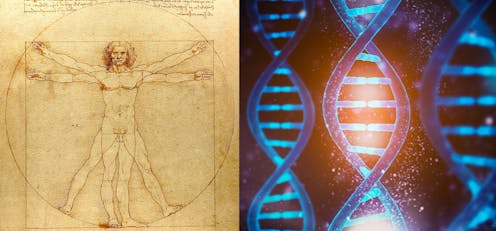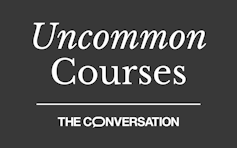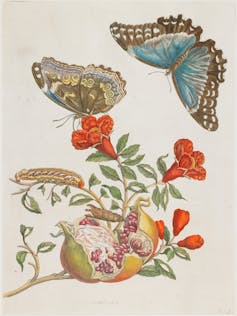

Uncommon Courses is an occasional series from The Conversation U.S. highlighting unconventional approaches to teaching.
Title of course:
Art & Science from Aristotle to Instagram
What prompted the idea for the course?
The idea for this course came out of my own research on intersections between art and science in the early modern period, roughly 1400-1700. In this time, the division between the arts and sciences was not as stark as people perceive it to be today. Many natural philosophers – the scientists of their day – like Galileo Galilei made images in the process of conducting their studies. However, they also relied on artists and artisans to communicate their ideas to a wider audience – they needed engravers, draftsmen and other graphic arts practitioners to make the images that would go into their books and published works.
In addition, throughout history the development of new technologies has affected artistic practices. The invention of the printing press and new photographic technologies allowed scientific ideas to be communicated in new ways to new audiences, but these inventions simultaneously created new artistic media.
What does the course explore?
In contemporary society, art and science are often characterized as diametrically opposed. However, knowledge making has been inextricably linked to image making since antiquity.

One way we explore this relationship is by studying people from antiquity to the present who cross these realms. Leonardo da Vinci is a great example. People think of him as a master Renaissance painter, and he painted what is widely considered the most famous painting in the world, the Mona Lisa. But at the same time, he also pursued scientific questions about anatomy, botany and motion and was an inventor.
But there were other examples of people who pursued science and art together. In the 19th century, Anna Atkins was one of the first people to use an early photographic technique – the cyanotype – to study British plants and algae. The images she created are aesthetically beautiful but also created new knowledge within botany.
In the course, we also explore different technological developments that affected the arts, creating new materials and media. These include technologies such as the printing press, camera obscura, daguerreotype and digital art.
Why is this course relevant now?
We live in a visually saturated world, yet we often take in these images uncritically. My students encounter images in every aspect of their lives, in greater quantity and at a greater rate than ever before. Yet, people frequently accept these images as true depictions of reality, even when they are not.
Why do people assume a scientific image is divorced from the same aesthetic choices and manipulation that are applied to the image on a magazine cover? Why do people accept a scientific image as objective and not a created object like a painting? Issues like photoshopped images or AI-generated artworks may seem unique to the modern moment, but concerns about manipulation and deception have a long history.
What’s a critical lesson from the course?
Today, the perceived division between empirical and quantitative science and creative and qualitative arts is even more pronounced than in the past.
In my classes, I find science students often think that a scientific image made today is strictly true or objective. Yet during the course they discover that many choices get made in constructing that image. What information should be included? What information should be left out?
The art students in the class soon come to realize that many of the artistic materials and media they rely on, be it synthetic pigment or digital technologies, were developed for scientific or engineering purposes.
What materials does the course feature?
“The Republic” (fourth century BCE) by Plato, where we consider his skepticism of the arts due to their ability to deceive.
“De Humani Corporis Fabrica” (1543) by Andrea Vesalius, an important book on human anatomy where the illustrations and text were equally influential.
Images from the Hubble Space Telescope, and how they can be considered both works of art and science.
What will the course prepare students to do?
It is my hope that after taking this course, students will have gained the skills to be more discerning in how they think about the ways the visual information around them is created. They will not only have a greater appreciation for the processes of creating artistic and scientific knowledge but also have gained a critical lens for assessing the images they see around them.
Katherine Reinhart receives funding from the NEH. During the 2019-2020 academic year, I was the NEH postdoctoral fellow at the Consortium for the History of Science, Technology, and Medicine in Philadelphia.
This article was originally published on The Conversation. Read the original article.







